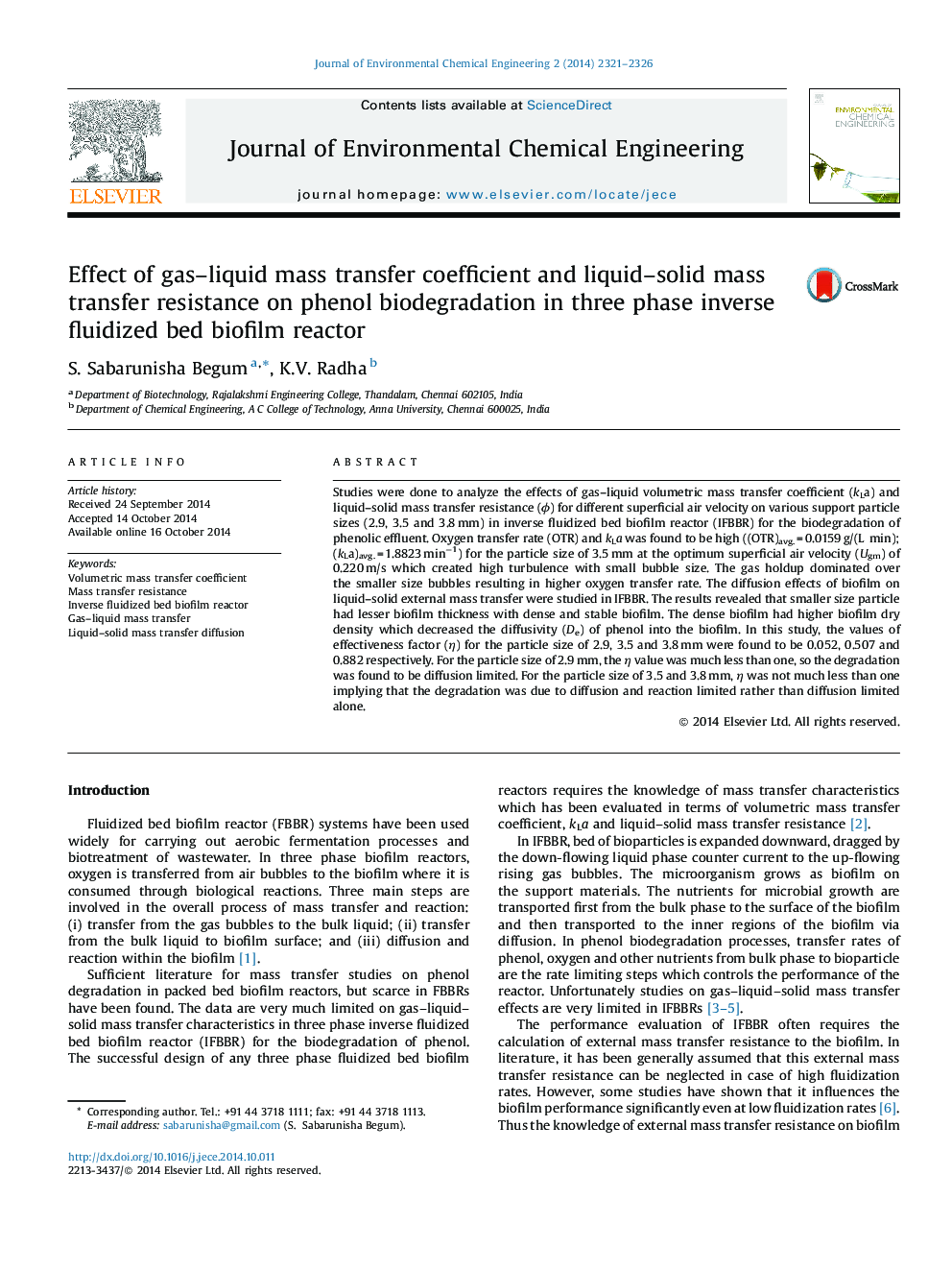| کد مقاله | کد نشریه | سال انتشار | مقاله انگلیسی | نسخه تمام متن |
|---|---|---|---|---|
| 221844 | 464266 | 2014 | 6 صفحه PDF | دانلود رایگان |
• Studied the effect of gas–liquid kLa and OTR in IFBBR for phenol biodegradation.
• Hydrodynamic operating parameters (Ug and ϵg) greatly influenced kLa.
• Biofilm characteristics affect De and η of the biofilm reactor system.
• Smaller particle has less η with more diffusion limitation.
Studies were done to analyze the effects of gas–liquid volumetric mass transfer coefficient (kLa) and liquid–solid mass transfer resistance (ϕ) for different superficial air velocity on various support particle sizes (2.9, 3.5 and 3.8 mm) in inverse fluidized bed biofilm reactor (IFBBR) for the biodegradation of phenolic effluent. Oxygen transfer rate (OTR) and kLa was found to be high ((OTR)avg. = 0.0159 g/(L min); (kLa)avg. = 1.8823 min−1) for the particle size of 3.5 mm at the optimum superficial air velocity (Ugm) of 0.220 m/s which created high turbulence with small bubble size. The gas holdup dominated over the smaller size bubbles resulting in higher oxygen transfer rate. The diffusion effects of biofilm on liquid–solid external mass transfer were studied in IFBBR. The results revealed that smaller size particle had lesser biofilm thickness with dense and stable biofilm. The dense biofilm had higher biofilm dry density which decreased the diffusivity (De) of phenol into the biofilm. In this study, the values of effectiveness factor (η) for the particle size of 2.9, 3.5 and 3.8 mm were found to be 0.052, 0.507 and 0.882 respectively. For the particle size of 2.9 mm, the η value was much less than one, so the degradation was found to be diffusion limited. For the particle size of 3.5 and 3.8 mm, η was not much less than one implying that the degradation was due to diffusion and reaction limited rather than diffusion limited alone.
Journal: Journal of Environmental Chemical Engineering - Volume 2, Issue 4, December 2014, Pages 2321–2326
